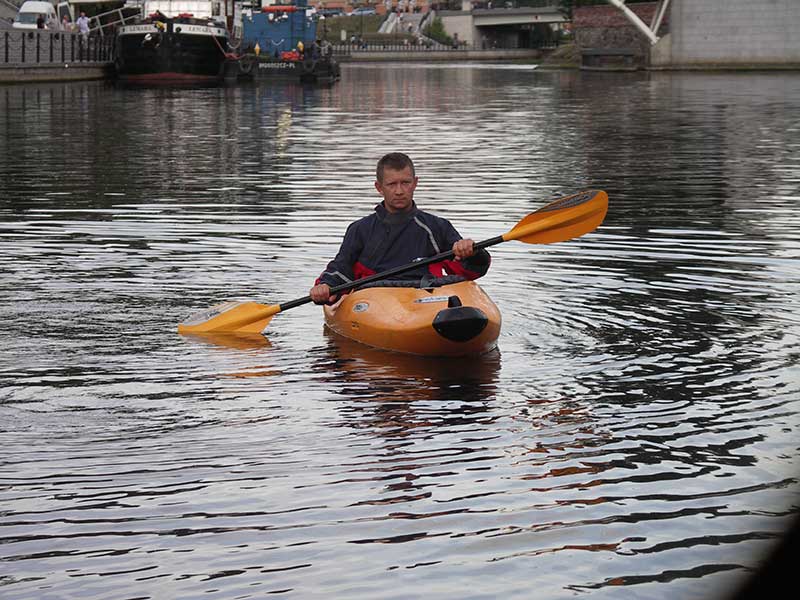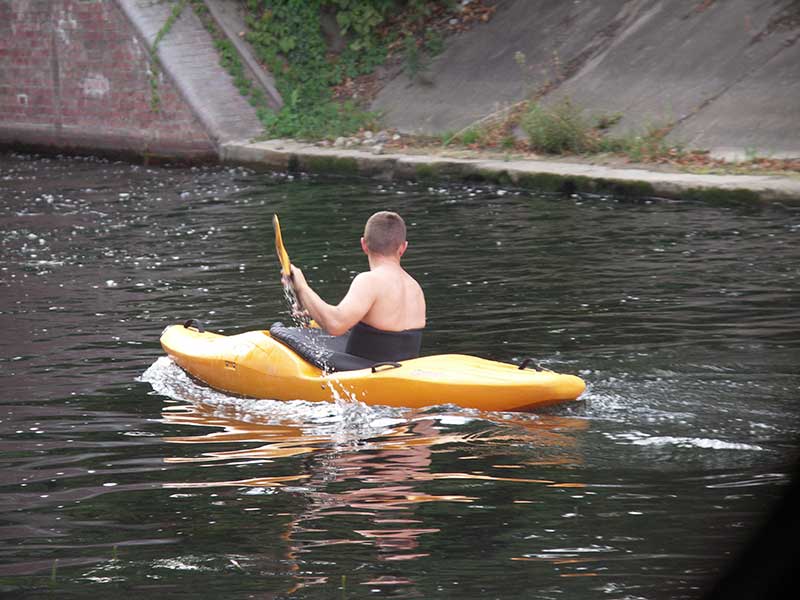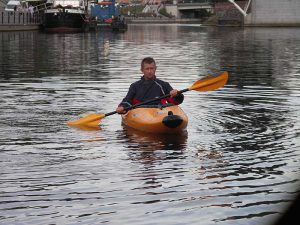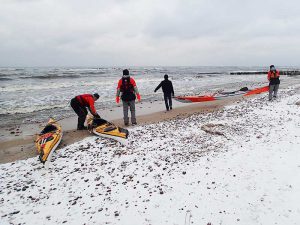TIPS
Home » Tips

NEOPRENE
There are many types of materials used to make a wetsuit. Most wetsuit manufacturers use the same foam, but they call it different names. In recent years, the quality of materials has changed dramatically. They have become more flexible, warmer, and more resistant to damage. This is due in large part to the technologies used to produce the foam, its foaming, and the various chemical components. The best materials are used in the construction with a „hidden seam”.
The materials have different thicknesses, measured in millimeters. The coldest waters require a 7 or 6 mm foam. Warmer waters require a wetsuit with a thickness of 2 mm or even 1 mm. Most wetsuits use a combination of 2 foam thicknesses. The thicker foam is the covering for the torso, the thinner foam is placed in the areas of the arms and knees.
The most common thicknesses are 5/4, 4/3 mm, and 3/2 mm.
SEWING AND JOINING
Types of stitches and connections in wetsuits
The following types of stitches and connections are distinguished in wetsuits:
- Flat stitch (flatstich) (also called flatlock)
- Hidden seam glued (vulcanized) to rubber surfaces on neoprene (GBS Glued and BlindStiched)
- Taped seam glued (vulcanized) to rubber surfaces on neoprene (GBS Glued and BlindStiched with seam tape)
Flat stitch (flatstich, flatlock) in long wetsuits is also recommended for warm water of 16 degrees Celsius (62 F). The stitch looks like „railroad tracks”. Inside and outside, the stitch is similar. The weave of the leading and connecting threads on both sides runs in the same way. The inner stitch is flat and more comfortable in contact with the skin than overlock stitches that stiffen the connections. Here too, a small amount of water will seep into the inside of the suit.
Hidden seam glued / vulcanized to rubber surfaces on neoprene in long wetsuits is recommended for colder water. The construction is the best for colder water, as the seams are covered with rubber. The appearance of the seam resembles a flat stitch, it is only slightly narrower. Water penetration into such a suit is very difficult structurally, but it is also a normal phenomenon.
Taped seam glued (vulcanized) to rubber surfaces on neoprene in long wetsuits is recommended for extremely cold temperatures of 10 degrees Celsius (50F) and below. The stitch is very similar to that used to join parts of a neoprene suit. The stitches are also reinforced and „hidden”. Water penetration into such a suit is even more difficult structurally, but it is also a normal phenomenon.


SELECTION OF GARMENT
Ask yourself how you will use the suit. What water sport do you want to practice – windsurfing, kitesurfing, diving, wake boarding, jet skiing, swimming? In what weather conditions, in what temperature range? If you don’t know exactly what suit to choose, contact a sportswear supplier, a sports store, people running surfing or diving schools, or people who already practice this sport at an advanced level. You will get a lot of useful advice, avoid the mistakes of beginners (at least in terms of wetsuits), and you will see a lot of kindness from enthusiasts. Hobby is always a cure for the hardships of everyday life.
Wetsuits have a variety of tailoring, cut designs, and types of foam used to make them. There are different sewing techniques and coating of the outer layer.
A wet suit will not provide you with a tight seal against water. A small amount will seep through the connections at the seams, zippers, collar, on the leg and arm finishes. Your body temperature will warm up this small amount of water, which will flow between the suit and the athlete’s skin. This takes from 3 to 10 minutes, depending on the construction, materials, water temperature and the type of reaction of your body to water.
MAINTENANCE AND STORAGE
Neoprene (the foam between the fabrics) naturally ages. This is due to the fact that it is in contact with atmospheric air. After about a few years from production, the first differences in the elasticity of neoprene can be seen. In the further stages of degradation, the foam begins to crumble from under the fabrics.
The second factor that radically accelerates the aging of neoprene is sunlight and UV rays. Suits used in sunny weather lose their properties in places such as the arms, upper torso, and collar. The sun causes the outer fabrics to fade quickly, and the processes described above occur inside the foam. The final stage is cracked neoprene patches in the shape of stripes, which are difficult to repair by gluing or reinforcing.
To make a neoprene suit last longer, it is worth:
- Avoid direct sunlight, especially when drying.
- Do not use dryers, other devices that accelerate water evaporation, heaters, or radiators.
- Wash in warm water with a mild detergent. Especially recommended in surfing and diving schools, where wetsuits are often used by different people. A proven effective detergent is feminine hygiene liquid, the alkaline pH effectively fights sweat and skin residue in the neoprene fabric.
- Do not use strong detergents or chemical washes, as there is a significant risk of accelerated aging of neoprene.
- After use in salt water, it is worth rinsing the suit in running water to remove dirt.
- The suit should be stored in a dark room, on a wide-spaced hanger so that the weight of the suit does not cause stretching and cracks in the neoprene on the shoulders on a thin hanger.
- Avoid contact with sharp objects. Putting on the suit should be done with the help of another person, when pulling up the legs and sleeves should be done by hands with long nails / tips.
- The zipper on a neoprene suit should never be closed when there is dirt on it (algae, sand, etc.).
- It is recommended to choose suits with a zipper, in the period of use, the zipper should be rubbed with paraffin to facilitate operation in different temperatures.
- In the case of storing a rolled-up suit in a closet on a shelf, the suit should be placed so that the zipper is on the outside of the roll.
Fitness clubs use antibacterial wipes to wipe down the inside of belts after VACU fitness treatments. This is an excellent and proven practice, but it is worth washing and rinsing the aprons as described above from time to time.








